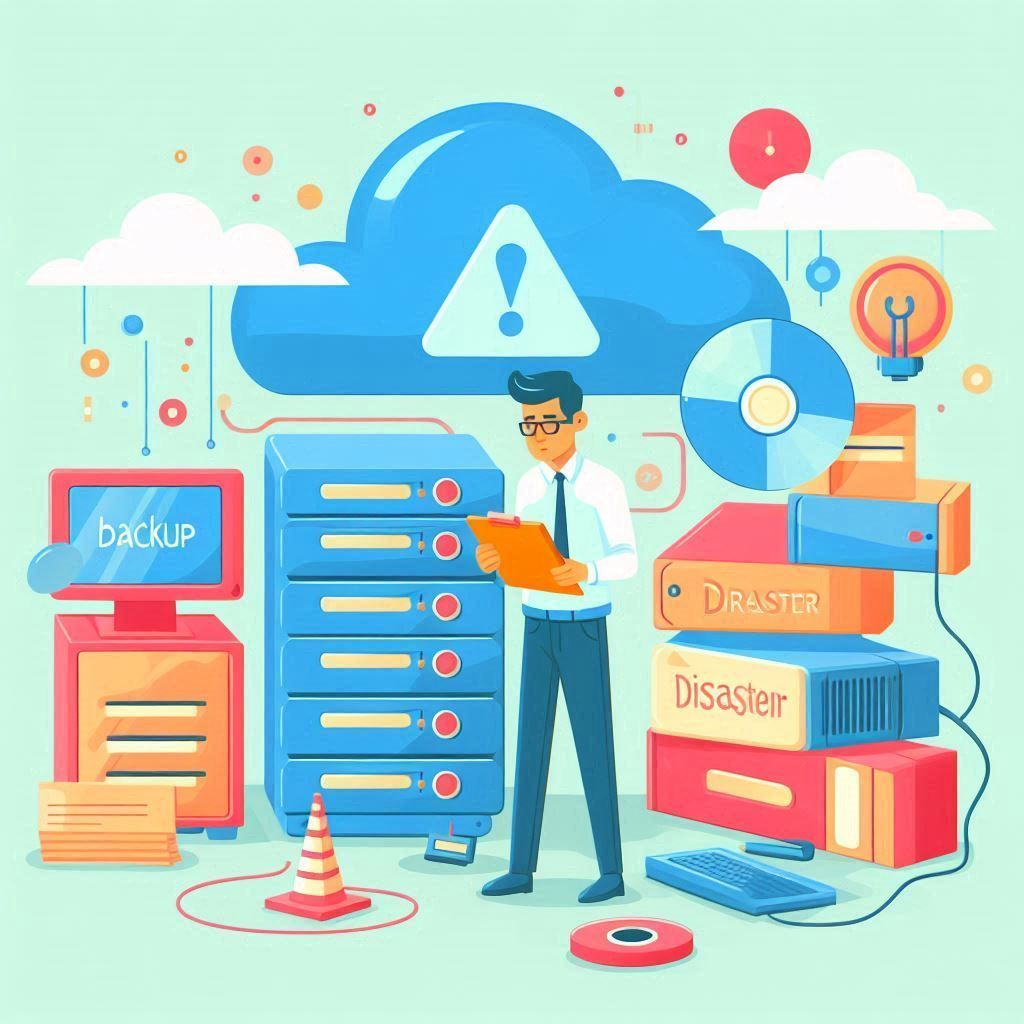Backup and Disaster Recovery: Ensuring You Don’t Lose It All
Backup and Disaster Recovery: The Ultimate Safeguard for Your Data

Backup and Disaster Recovery: Ensuring You Don’t Lose It All
In today's digital age, data is the lifeblood of any organization. From financial records and customer information to proprietary research and development data, the information stored on your systems is invaluable. But what happens when disaster strikes?
Whether it's a cyberattack, hardware failure, natural disaster, or human error, the consequences of data loss can be catastrophic. This is where backup and
disaster recovery (BDR) come into play. Let's explore why BDR is crucial and how it can prevent you from losing everything.
The Importance of Backup and Disaster Recovery
Protecting Against Data Loss
Data loss can occur due to various reasons:
- Cyberattacks: Ransomware and other malware can encrypt or destroy data, making it inaccessible.
- Hardware Failures: Hard drives, servers, and other hardware components can fail unexpectedly.
- Natural Disasters: Floods, fires, earthquakes, and other natural events can damage physical infrastructure.
- Human Error: Accidental deletions or overwrites can lead to significant data loss.
Having a robust backup strategy ensures that you have copies of your data stored securely, ready to be restored when needed.
Minimizing Downtime
Downtime can be incredibly costly for businesses. According to a report by Gartner, the average cost of IT downtime is $5,600 per minute. This includes lost revenue, decreased productivity, and potential reputational damage. A well-planned disaster recovery strategy can minimize downtime by enabling quick restoration of services, ensuring business continuity.
Compliance and Legal Requirements
Many industries are subject to regulatory requirements that mandate data protection and recovery capabilities. For instance, healthcare organizations must comply with HIPAA, which includes provisions for data backup and disaster recovery. Failing to meet these requirements can result in hefty fines and legal consequences.
Peace of Mind
Knowing that your data is backed up and can be recovered quickly in the event of a disaster provides peace of mind. This allows you to focus on your core business activities without constantly worrying about the potential for data loss.
Key Components of a Backup and Disaster Recovery Plan
- Regular Backups: Regularly backing up data is the foundation of any BDR strategy.
Here are some best practices:
- Frequency: Determine how often data should be backed up based on how frequently it changes. Critical data might require daily or even hourly backups.
- Storage Locations: Use multiple storage locations, such as on-site, off-site, and cloud storage, to
ensure redundancy.
- Automation: Automate backups to ensure consistency and reduce the risk of human error.
Disaster Recovery Plan (DRP)
A DRP outlines the steps to be taken in the event of a disaster. Key elements include:
- Risk Assessment: Identify potential risks and their impact on the business.
- Recovery Time Objectives (RTO) and Recovery Point Objectives (RPO): Define acceptable downtime (RTO) and data loss (RPO) thresholds.
- Roles and Responsibilities: Assign specific roles and responsibilities to team members for executing the DRP.
- Communication Plan: Establish a communication plan to keep stakeholders informed during a disaster.
- Testing and Training: Regularly test the DRP and train employees to ensure everyone knows their role.
Technology and Tools
Utilize the right technology and tools to support your BDR strategy:
- Backup Software: Choose reliable backup software that meets your needs.
- Cloud Solutions: Leverage cloud-based backup and disaster recovery services for scalability and flexibility.
- Monitoring and Alerts: Implement monitoring tools to detect potential issues early and send alerts to relevant personnel.
Conclusion
In conclusion, backup and disaster recovery are essential components of any comprehensive data management strategy. They protect against data loss, minimize downtime, ensure compliance, and provide peace of mind. By regularly backing up data, developing a robust disaster recovery plan, and leveraging the right technology, you can safeguard your organization against the unexpected and ensure that you don’t lose it all. Remember, it's not a matter of if disaster will strike, but when. Being prepared can make all the difference.
To see how Simpl Solutions can assist you with a backup and disaster recovery plan. Contact us today for a friendly chat.
Contact Us
We will get back to you as soon as possible.
Please try again later.
+64 7 242 4375
Supporting clients from
Auckland to the Bay of Plenty.
support@simplsolutions.co.nz
www.simplsolutions.co.nz




